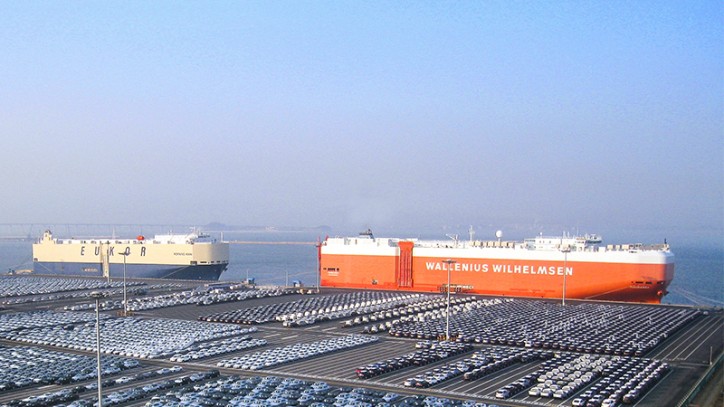Wallenius Wilhelmsen group has received class approval for its MRV plans across its fleet and will, therefore, be compliant when the new regulation takes effect from January 1, 2018.
The MRV Regulation (Monitoring, Reporting and Verification of CO2) is part of EU's regulatory strategy to reduce greenhouse gas emissions, which for shipping are 98% CO2. It requires ship owners and operators to monitor, report and verify CO2 emissions for vessels larger than 5,000 gross tonnage (GT) calling at any EU and EFTA (includes Norway and Iceland) port.

Important first step towards compliance
To prepare to comply with the EU MRV regulation, the first step was to develop and submit a monitoring plan for each of the group’s ships that fall under the scope of the regulation by August 31, 2017. The plan specifies the method chosen to monitor and report CO2 emissions as well as the cargo work done, in tonne kilometers.
The monitoring plans have now been verified by the various classification societies used by the fleet.
“The reduction of CO2 emissions is one of the largest challenges for the shipping industry. Wallenius Wilhelmsen group supports a fact-based approach to further CO2 regulatory development and therefore sees comprehensive data collection and analysis as a logical first step in that process”, says Head of Sustainability, Roger Strevens.
Data collection, which starts on January 1, 2018, must be done for every voyage, or voyage leg, where an EU port is involved. That data includes the quantity of each fuel type consumed as well as the amount of cargo work done in tonne-kilometers. The data is verified by a third-party organization and then aggregated on an annual per vessel basis before being sent to a central database. The aggregated vessel data will be published by the European Commission by 30 June 2019.
EU MRV and IMO DSC
A global CO2 Data Collection Scheme (DCS) is also being developed by the International Maritime Organization (IMO) and is set to start in 2019. As a global industry, it is critical to have effective global regulation, therefore WWL strongly supports efforts to bring EU’s MRV into alignment with the DCS of IMO. That effort will help to avoid unnecessary double reporting.
The wider regulatory picture
The IMO is currently working on its Initial GHG Strategy, which will be ready by mid-2018. That strategy will set out the general approach to decarbonisation in the sector and may include indications of when specific reduction milestones should be met.
The practical measures, whether technical, operational or market-based in nature, to achieve those reductions will follow afterwards. What those initiatives will be and when they’ll apply to which vessels will be at partially informed by the findings of the DCS scheme.
Source: Wallem Wilhelmsen